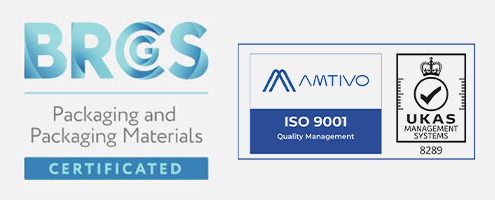Just to be clear, this isn’t about giving your leftovers a home for tomorrow’s lunch; we’re talking about getting savvy with our supplies and maxing out their lifespan – but without compromising on quality or safety.
Intrigued? Let’s explore everything from picking the right containers to practical tips that make storing easy-peasy! Not forgetting how such choices can impact our planet too.
A little forewarning: you might end up seeing plastic containers in a whole new light after this…
Understanding Long-Term Food Storage in Plastic Containers
Storing food long-term in plastic containers is common, but not all plastics are equal. The right container can keep your food fresh and safe to eat.
Moulded PET (Polyethylene Terephthalate) plastic containers from MPS Europe, for instance, are a great choice. They’re robust, resistant to bacteria and mould growth due to their non-porous nature.
It’s crucial though that the seal on these containers remains intact over time; otherwise it might lead to spoilage or contamination of stored foods. This is because air exposure can change the texture and taste of your goodies – nobody wants stale biscuits.
To get optimal results with long-term storage using plastic containers, you must understand their properties fully.
The Right Plastic Containers for Long-Term Food Storage
Different plastics possess diverse characteristics that can affect the quality and safety of your food products.
Polyethylene Terephthalate (PET) is a top choice due to its non-reactive nature. PET containers don’t leach chemicals into stored food, maintaining its freshness over time.
But let’s not forget High-Density Polyethylene (HDPE). Known for their durability and chemical resistance, HDPE containers are perfect for storing dry foods like cereals or pasta. With these options at hand, you’re well-equipped to preserve the flavour and nutritional value of your goods.
Practical Tips for Storing Food in Plastic Containers
The right approach to storing food in plastic containers can significantly prolong its shelf life. First, it’s essential to use clean and dry containers. Any residual moisture could lead to mould growth.
NHS guidelines recommend keeping your stored food at a cool temperature, ideally below 5°C.
Packing foods tightly and using the appropriate lid helps keep air out – an important step as oxygen can speed up decomposition. A vacuum sealer is a worthwhile investment for those intending to store considerable amounts of food.
Finally, remember that different types of food have different storage requirements. Some do well in room temperatures while others need refrigeration or freezing – so always check before stashing away.
The Impact of Long-Term Plastic Storage on Food Quality
This influence primarily affects the texture, flavour, and nutritional value.
The permeability of plastics to gases like oxygen is one issue. Even with tight lids, certain gases might seep into your stored goods over time. These reactions could lead to unwanted changes in taste or texture (Food Packaging: Principles and Practice).
Nutritional loss is another concern when using plastic for extended periods. Certain vitamins are light-sensitive, so clear containers may not be optimal for preserving them. Therefore, opaque or coloured PET containers offer more protection against nutrient degradation. That’s why we see supplements like protein powder in coloured plastic containers.
Environmental Considerations of Using Plastic Containers
Storing food in plastic containers can be practical, but what about the environmental impact? P.E.T. plastics are widely used for their strength and clarity, but they’re not just robust – they’re also recyclable.
Prices for PET have gone up due to increased demand and raw material expenses. This trend may push us towards more sustainable options.
A good move would be switching to reusable containers or ones made from recycled materials. Switching to reusables or recycled materials can drastically reduce waste, and even diminish production emissions by as much as 70%. So while PET is handy for long-term storage needs, we need to think green too.
FAQs about Storing Food Longterm in Plastic Containers?
Can you use plastic containers for long term storage?
Yes, but only certain types of plastics. BPA-free and food safe plastic containers are the best choices.
Is it OK to store food in plastic containers?
Absolutely, storing food in safe, clean and suitable food storage containers can help maintain freshness while avoiding contamination.
How long can you use plastic food containers?
The lifespan of a container depends on usage and care. Typically, they last up to a year or more if used properly.
What is the best way to store food for long term storage?
To keep your grub fresh longer, seal foods well inside high-quality vacuum-sealed bags or air-tight glass jars with desiccants thrown in too.
Conclusion
It’s a yes, but with care. You’ve got to pick the right types and handle them correctly.
You should now understand about different plastics and their perks or pitfalls. And you know how proper prep, sealing, and storage conditions can stretch out your supplies’ lifespan without risking quality or safety.
It’s clear that storing food in plastic containers isn’t just an easy-peasy solution for leftovers – it’s a tool for efficient living too. But let’s not forget our planet amidst this convenience – considering sustainability is key!
Above all else, remember: choosing wisely will make sure both your taste buds and Mother Earth thank you! So why wait? Get started today on this journey towards smart, safe and sustainable food storage.

